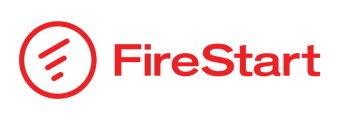Notifications
![]()
In Notifications, all messages are displayed. Before receiving a task, there is always a notification sent to you, which you can find in the Notifications module. If another user sends you a notification, you can also view it here.
Tasks
![]()
When executing a new process, the people concerned will receive tasks with the need for it to be completed, approved and submitted for the workflow. In Tasks, in the Dashboard tab, you can find an overview of all of your tasks, which can be accessed with a double-click. In the Archive tab, you can find your completed tasks. The Supervisor tab is a bit special because if you are the Process Owner, you can view all required tasks for everyone involved in the process. The Activity Failed Tasks are also shown in the Supervisor tab, as these only concerns the Process Owner. To learn more about the Activity Failed Tasks visit the Operating with FireStart topic.
Workflows
![]()
This module focuses on the implementation of workflows. You can apply this to both running and finished workflows. In the model directory, you can read about the current progress, the running time and the estimated duration of a process. By double-clicking, you can open the process on the canvas.
Process Designer
![]()
The Process Designer is the central and most comprehensive module of FireStart. The modeling of your business processes and the expansion of these models through the use of the elements created in other designers can be achieved in the Process Designer. Besides modeling processes, you can also develop them into workflows over the Process Designer. For further information about how to model a process in FireStart, see Create a Process Model topic.
Process Map Designer
![]()
With a process map, you can generate a graphic overview of all of your business processes and their subsequent connections. The process map can be used as a structural frame for process managing. In the Process Map Designer you have the opportunity to organize the existing processes and their respective sub-processes into a structure through linking and grouping them together. Additionally, you can choose the color and size of the individual elements as a means of refining the optical format. Learn more about the process map in the topic Create a Process Overview.
Role Designer
![]()
In the Role Designer, an internal business function is described as a role. According to the divisional structure of your business, these roles can be grouped together. The individual roles can be assigned to specific tasks in the Process Designer. Relevant people are linked automatically to the model from the business's own Active Directory, therefore saving extra time and work. If you want to get more information about the Role Designer, you might want to read the topic Create a Role Model.
Documents Designer
![]()
The Document Designer organizes the documents relevant to your processes. The documents can consist of Excel Spreadsheets, Word Documents, PDF and image data. You can add individual documents as required to the chosen processes or process steps. These documents can also be integrated into the workflow. The elements created in the Document Designer are only representations of the document and act as links to the actual document. Whole documents or document content can be exchanged through the central administration, avoiding the need to edit individual processes or process maps.
Domain Designer
![]()
You can organize your business activities into groups on business or industry-specific terms (Domains) and then manage them using the Domain Designer. In the Domain Designer you can enter any type of technical term as a heading, and manage the files in one place. Domains can be divided into different functions such as product groups or cost centers.
Risk Designer
![]()
The Risk Designer allows you to compile and evaluate operative and strategic risks for your business. You can organize specific risk response actions into groups and attach instructions such as drilling routines to them. In doing this, you can protect your business from risks through providing information on possible alternative processes. This process means a vulnerable process can be displayed in a clear way.
Business Entity Designer
![]()
The Business Entity Designer enables the creation of business entities and to establish the relationships between them. Business entities provide support when creating a workflow. With business entities, you can bind data from a third party system like SharePoint or a database to an element, which is often very helpful for the execution of workflows.
IT-System Designer
![]()
The IT-system and business facilities can be designed and modeled in the IT-System Designer. IT-systems consist of various digital devices, software applications, and data structures. The individual IT-system components can be attached to specific tasks in a process, in order to illustrate each system's functions and their respective system affiliations.
